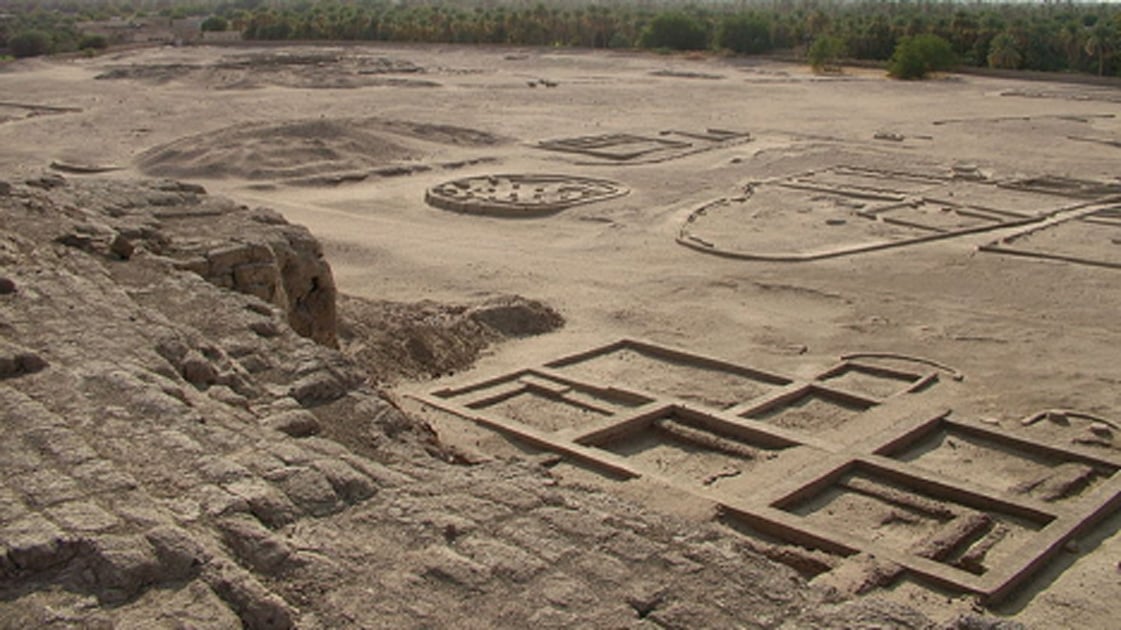Swiss Archaeologist Makes Surprise Discovery of Round Temples After Years of Excavating in Sudan
A team of Swiss archaeologists have recently uncovered three temples in Sudan that could possibly help unlock some of the mysteries of ancient Africa, a debated topic that has long challenged experts of ancient history. The archaeologists that made the discovery now claim that the newly found temples are round and look nothing like other buildings on the planet.
The Forgotten Kingdom of Kerma
The structures are estimated to date back to 1,500 to 2,000 BC and they were discovered towards the end of 2016, close to the famous archaeological site of Kerma in northern Sudan.
The Kingdom of Kerma was an ancient civilization and historians consider it the first Nubian state. At the ancient city of Kerma, one is able to find deffufas - a type of structure unique to the ancient Nubians. The first settlement in Kerma can be traced back to the 4th millennium BC. This phase has been called ‘Pre-Kerma’.
- Massive Cemeteries with Strange Burials Excavated at Medieval Monastery in Sudan
- Archaeological Marvels Unearthed in Sudan

The western deffufa in Kerma. (CC BY 2.0)
The Kingdom of Kerma, however, was established around 2500 BC. The timeline of this kingdom has been divided into three phases – Ancient / Early Kerma (around 2500 BC – 2050 BC), Middle Kerma (around 2050 BC – 1750 BC) and Classic Kerma (around 1750 BC – 1500 BC). Around 1500 BC, this Nubian kingdom came to an end, as it was during this period of time that the Egyptian pharaoh, Thutmosis I, defeated it and brought its territories under Egyptian rule. The Kingdom of Kerma was re-discovered by the American archaeologist, George Reisner, during the early 20th century.
Newly Found Structures are Unique Architecture?
Swiss archaeologist Charles Bonnet, 83, one of the world’s most decorated experts when it comes to Sudan’s history and archaeological heritage, stated the three temples are “unlike anything discovered” before. “This architecture is unknown ... there is no example in central Africa or in the Nile Valley of this architecture. There are no roots today in Africa and we have to find these roots… this is the secret of Africa,” Bonnet told AFP news agency.

Kerma, Sudan, Egyptian Pnubs near western Deffufa. (CC BY 3.0)
Unfortunately, no images seem to have been released to date of what exactly the temples look like or how excavations are going at the site.
The curious structures were found only a few hundred meters from Kerma in a place called Dogi Gel (“Red Hill”), an area that Bonnet and his archaeological team has been excavating for decades. An astonished Bonnet with the rare discovery added, “At Kerma the architecture is square or rectangular shaped… and here just a kilometer away we have round structures. We don’t know of many round temples in the world… we don’t have examples to compare.”

Map of the site of Dukki Gel (Dogi Gel). (pharaons-noir.fr)
Latest Discovery Might Mean Future Artifacts
The highly-respected archaeologist has been exploring the Sudan sites for over five decades and was one of the first men who promoted the now widely accepted theory that ancient Sudan was autonomous of Egypt. He was also the one who unearthed the seven “black pharaohs” (granite statues of Sudan’s Nubian rulers) not far from the banks of the Nile, where it was revealed that Nubia was home to vast amounts of gold, ivory, and ebony.
- 16 Ancient Pyramids, Burial Sites for a Vanished Kingdom, Found in Sudan
- The Forgotten Kingdom of Kerma and Its Incredible Deffufas

Statues of pharaohs of the Twenty-Fifth Dynasty of Egypt (Black Pharaohs) discovered near Kerma. (CC BY-SA 3.0)
Bonnet suggests that this is just the beginning of further artifacts and he speculates that way more are just waiting to be discovered. Furthermore, Bonnet said that he’s very curious as to why the Egyptians – who colonized Nubia – maintained the round temples, even though he’s pretty confident that further evidence that is now buried in Sudan’s Nile Valley might help them understand the situation better in the near future. Finally, Bonnet went on predicting that Sudan could possibly give birth to its own unique branch of archaeology by saying, “We have here extraordinary history of the world. Maybe after some years we will have Sudanology as strong as Egyptology.”
Top Image: The ancient city of Kerma, Sudan. Source: CC BY SA 4.0



















